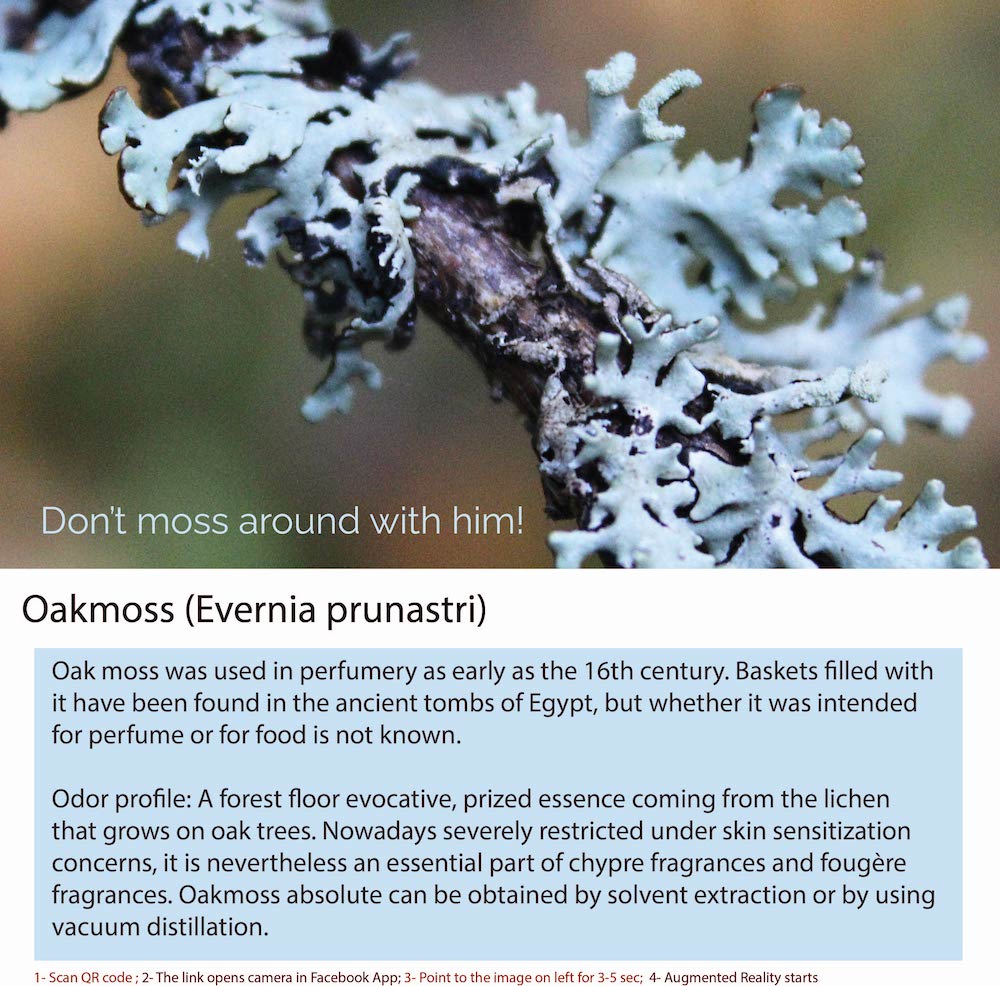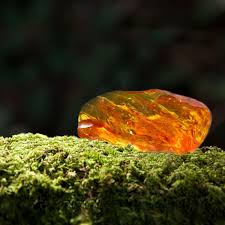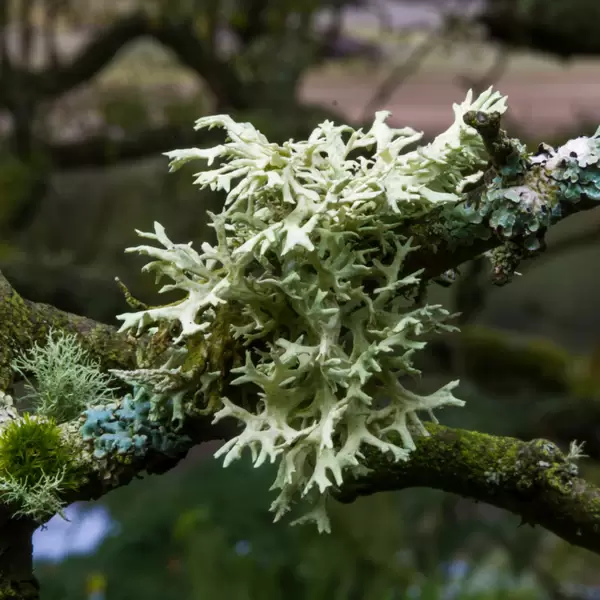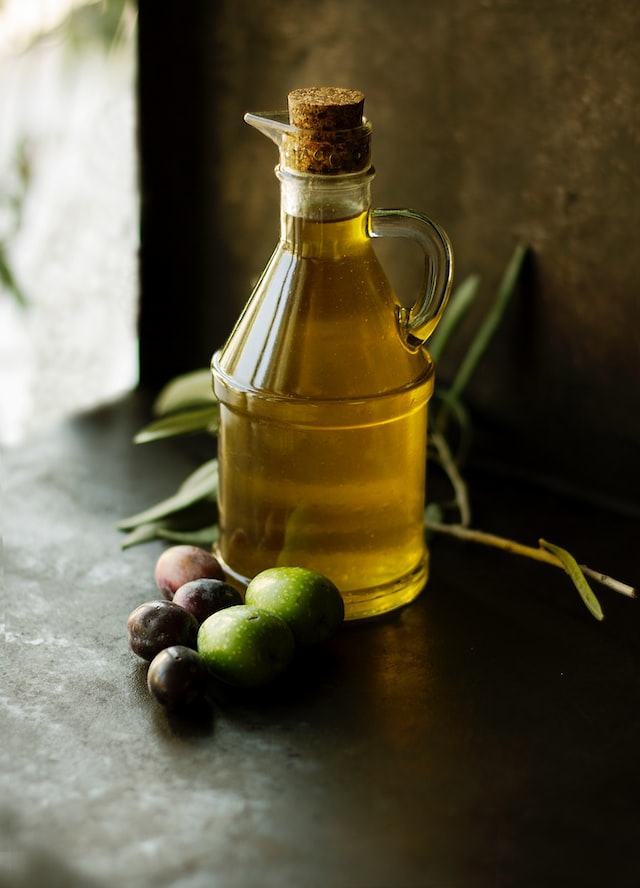Unveiling the Essence of Oakmoss: A Fragrance Inspired by Mossy Lichen
Oakmoss: A Mystical and Earthy Essence
Introduction: Oakmoss, with its mystical and earthy essence, is a highly prized and versatile ingredient in the world of perfumery and aromatherapy. Derived from certain species of lichen that grow on oak trees, oakmoss possesses a unique and captivating aroma that evokes a sense of nature's enchantment. This essay explores the captivating world of oakmoss, encompassing its presence in perfumes, therapeutic oils, food, medicinal systems, historical significance, and intriguing fun facts about this intriguing and cherished essence.
The Enchantment of Oakmoss: Oakmoss, scientifically known as Evernia prunastri, is a type of lichen that grows on the bark of oak trees. It is found predominantly in temperate forests of Europe and North America. When extracted, oakmoss yields a dark green or brownish-green absolute, which possesses a captivating and earthy aroma with subtle nuances of forest floor and mossy notes.
Perfumes and Fragrance: Oakmoss absolute is a beloved and iconic ingredient in perfumery. Its unique aroma adds depth, complexity, and a touch of mystery to fragrances. Oakmoss is often used as a base or middle note in perfume compositions, blending harmoniously with other fragrance ingredients. Its earthy and woody scent creates a connection to nature and evokes a sense of ancient forests, making it a popular choice in many classic and modern perfumes.
Therapeutic Oils and Aromatherapy: Oakmoss absolute is not commonly used in aromatherapy due to its potential allergenic properties. However, certain essential oils with similar earthy and grounding characteristics, such as patchouli and vetiver, are used in aromatherapy to promote relaxation, balance emotions, and enhance meditation practices.
Culinary Uses and Medicinal Applications: Oakmoss is not typically used in culinary creations due to its strong and potent aroma. However, historically, it has been used as a flavoring agent in some beverages and confections. Medicinally, oakmoss has been used in certain traditional remedies for its potential astringent and anti-inflammatory properties.
Historical Significance: Oakmoss has a long history of use in perfumery, dating back centuries. Its association with oak trees and its earthy and captivating scent have made it a favored fragrance ingredient in various cultures. In the 18th and 19th centuries, oakmoss was a significant component of chypre perfumes, a classic fragrance family characterized by its oakmoss, citrus, and woody notes.
Fun and Crazy Facts:
Oakmoss, with its mystical and earthy essence, holds a special place in the realm of perfumery and aromatherapy. Its captivating aroma evokes a connection to nature and ancient forests, offering a sense of enchantment and grounding. As we appreciate the allure and versatility of oakmoss, we are reminded of the fascinating wonders of nature and the magic it imparts into the world of fragrance.
Introduction: Oakmoss, with its mystical and earthy essence, is a highly prized and versatile ingredient in the world of perfumery and aromatherapy. Derived from certain species of lichen that grow on oak trees, oakmoss possesses a unique and captivating aroma that evokes a sense of nature's enchantment. This essay explores the captivating world of oakmoss, encompassing its presence in perfumes, therapeutic oils, food, medicinal systems, historical significance, and intriguing fun facts about this intriguing and cherished essence.
The Enchantment of Oakmoss: Oakmoss, scientifically known as Evernia prunastri, is a type of lichen that grows on the bark of oak trees. It is found predominantly in temperate forests of Europe and North America. When extracted, oakmoss yields a dark green or brownish-green absolute, which possesses a captivating and earthy aroma with subtle nuances of forest floor and mossy notes.
Perfumes and Fragrance: Oakmoss absolute is a beloved and iconic ingredient in perfumery. Its unique aroma adds depth, complexity, and a touch of mystery to fragrances. Oakmoss is often used as a base or middle note in perfume compositions, blending harmoniously with other fragrance ingredients. Its earthy and woody scent creates a connection to nature and evokes a sense of ancient forests, making it a popular choice in many classic and modern perfumes.
Therapeutic Oils and Aromatherapy: Oakmoss absolute is not commonly used in aromatherapy due to its potential allergenic properties. However, certain essential oils with similar earthy and grounding characteristics, such as patchouli and vetiver, are used in aromatherapy to promote relaxation, balance emotions, and enhance meditation practices.
Culinary Uses and Medicinal Applications: Oakmoss is not typically used in culinary creations due to its strong and potent aroma. However, historically, it has been used as a flavoring agent in some beverages and confections. Medicinally, oakmoss has been used in certain traditional remedies for its potential astringent and anti-inflammatory properties.
Historical Significance: Oakmoss has a long history of use in perfumery, dating back centuries. Its association with oak trees and its earthy and captivating scent have made it a favored fragrance ingredient in various cultures. In the 18th and 19th centuries, oakmoss was a significant component of chypre perfumes, a classic fragrance family characterized by its oakmoss, citrus, and woody notes.
Fun and Crazy Facts:
- Protected Species: Due to over-harvesting and habitat destruction, certain oakmoss species have become endangered, leading to efforts to protect and conserve these lichens.
- Chanel No. 19: One of the most famous perfumes to feature oakmoss is Chanel No. 19, a classic fragrance beloved for its sophisticated and timeless allure.
- Moss Gardens: In Japan, "moss gardening" is a popular practice that involves cultivating and arranging mosses, including oakmoss, in serene and contemplative garden settings.
- Natural Fixative: Oakmoss acts as a natural fixative in perfumery, helping to prolong the fragrance's longevity and enhancing its overall aroma.
- Forest Floor Associations: The aroma of oakmoss is often described as reminiscent of the forest floor after a rain, with its damp, earthy, and mossy notes.
Oakmoss, with its mystical and earthy essence, holds a special place in the realm of perfumery and aromatherapy. Its captivating aroma evokes a connection to nature and ancient forests, offering a sense of enchantment and grounding. As we appreciate the allure and versatility of oakmoss, we are reminded of the fascinating wonders of nature and the magic it imparts into the world of fragrance.
To experience augmented reality, please open the Facebook-app using QR code and point to the image below
Experience Nature at Home with Our Earthy Aromatic Collection
Oakmoss is a lichen that grows on oak trees, it is collected in the wild, and is used in perfumery to add a woody, mossy, and earthy scent to perfumes. It is a common ingredient in many perfumes, colognes, and other fragrances, and is often used as a fixative to help the scent of the perfume last longer. Oakmoss is also used in soaps, candles, and other personal care products.
Oakmoss is a key ingredient in many classic perfumes such as Chanel No.5, Dior J'adore, Guerlain Shalimar, and many more. Oakmoss Absolute is a more potent and more concentrated form of Oakmoss, which is used in perfumery to add a woody, mossy and earthy scent to perfumes.
However, Oakmoss is an allergen for some people, so it's important to check the ingredients list before buying any fragrance that contains Oakmoss. The use of Oakmoss in perfumery is under scrutiny by some regulatory bodies because of its potential allergenic properties. In some countries, perfumes containing Oakmoss have to be labeled as such, and some perfumers are looking for alternatives to Oakmoss.
Oakmoss is a key ingredient in many classic perfumes such as Chanel No.5, Dior J'adore, Guerlain Shalimar, and many more. Oakmoss Absolute is a more potent and more concentrated form of Oakmoss, which is used in perfumery to add a woody, mossy and earthy scent to perfumes.
However, Oakmoss is an allergen for some people, so it's important to check the ingredients list before buying any fragrance that contains Oakmoss. The use of Oakmoss in perfumery is under scrutiny by some regulatory bodies because of its potential allergenic properties. In some countries, perfumes containing Oakmoss have to be labeled as such, and some perfumers are looking for alternatives to Oakmoss.
Premium Aromatherapy Scents for a Tranquil Atmosphere
Oakmoss has been used in perfumery for centuries. It is believed to have been used in ancient Egypt and Rome, and it was commonly used in perfumes and other fragrances during the Middle Ages and the Renaissance. Oakmoss has a strong, earthy, and woody scent, which makes it a popular ingredient in many perfumes and colognes.
In the 19th century, Oakmoss became a key ingredient in the creation of many classic perfumes such as Chanel No.5, Dior J'adore, Guerlain Shalimar, and many more. Oakmoss Absolute, a more potent and more concentrated form of Oakmoss, was also developed during this time, which allowed perfumers to add a stronger mossy and earthy scent to perfumes.
In recent years, Oakmoss has come under scrutiny by some regulatory bodies because of its potential allergenic properties. In some countries, perfumes containing Oakmoss have to be labeled as such, and some perfumers are looking for alternatives to Oakmoss. The use of Oakmoss in perfumery is a controversial topic, and it is important to check the ingredients list before buying any fragrance that contains Oakmoss.
In the 19th century, Oakmoss became a key ingredient in the creation of many classic perfumes such as Chanel No.5, Dior J'adore, Guerlain Shalimar, and many more. Oakmoss Absolute, a more potent and more concentrated form of Oakmoss, was also developed during this time, which allowed perfumers to add a stronger mossy and earthy scent to perfumes.
In recent years, Oakmoss has come under scrutiny by some regulatory bodies because of its potential allergenic properties. In some countries, perfumes containing Oakmoss have to be labeled as such, and some perfumers are looking for alternatives to Oakmoss. The use of Oakmoss in perfumery is a controversial topic, and it is important to check the ingredients list before buying any fragrance that contains Oakmoss.
Discover the Benefits of Oakmoss Aroma for Mind and Bod
Oakmoss fun facts:
- Oakmoss is a lichen, which is a type of organism that is formed by the symbiotic relationship between a fungus and an algae or cyanobacteria.
- Oakmoss is commonly found growing on oak trees, but it can also be found on other types of trees such as pine and fir.
- Oakmoss is collected in the wild, usually in Mediterranean regions such as France, Spain and Italy.
- Oakmoss is known for its strong, earthy, and woody scent, which makes it a popular ingredient in perfumery.
- Oakmoss is often used as a fixative in perfumes, which helps the scent of the perfume last longer on the skin.
- Oakmoss Absolute, is a more potent and more concentrated form of Oakmoss, is also used in perfumery to add a stronger mossy and earthy scent to perfumes.
- Oakmoss is an allergen for some people, so it's important to check the ingredients list before buying any fragrance that contains Oakmoss.
- Oakmoss has been used in perfumery for centuries, and it was commonly used in perfumes and other fragrances during the Middle Ages and the Renaissance.
- Oakmoss is also used in traditional perfumery techniques such as chypre perfumes, named after the Greek island of Chypre, where oakmoss was harvested, and Fougère perfumes, a French term meaning fern, which is a classic men's fragrance genre that uses Oakmoss as a base note.
- Oakmoss is also commonly used in soap making, candles, and other personal care products.
The Art of Crafting Mossy Lichen Oakmoss Scent
The scent of Oakmoss is earthy, woody and mossy. It has a strong, natural, and slightly musty aroma that is often described as being reminiscent of the forest floor. The scent is complex and can also have slightly spicy, nutty or even slightly leathery nuances. Oakmoss is a base note, which means it has a strong and long-lasting scent that lasts for hours on the skin.
Oakmoss Absolute, which is a more potent and more concentrated form of Oakmoss, has a stronger, more intense and more earthy mossy scent, which is often used to add depth and complexity to perfumes. Oakmoss is a key ingredient in many classic perfumes such as Chanel No.5, Dior J'adore, Guerlain Shalimar, and many more, it's also a popular ingredient in many men's fragrances.
Oakmoss Absolute, which is a more potent and more concentrated form of Oakmoss, has a stronger, more intense and more earthy mossy scent, which is often used to add depth and complexity to perfumes. Oakmoss is a key ingredient in many classic perfumes such as Chanel No.5, Dior J'adore, Guerlain Shalimar, and many more, it's also a popular ingredient in many men's fragrances.
Elevate Your Space with Earthy Aroma
Many famous perfume brands have used Oakmoss in their fragrances, here are a few examples:
- Chanel No.5 - This classic perfume contains Oakmoss as a base note, which adds a woody and mossy element to the scent.
- Dior J'adore - Oakmoss is one of the key ingredients in this popular women's fragrance, which adds depth and complexity to the scent.
- Guerlain Shalimar - Another classic perfume, which uses Oakmoss as a base note to give the scent a woody and mossy character.
- Yves Saint Laurent Opium - Oakmoss is an important ingredient in this classic fragrance, which gives it a woody and earthy base note.
- Paco Rabanne 1 Million - Oakmoss is used as a base note in this popular men's fragrance, which gives it a woody and mossy character.
- Christian Dior Eau Sauvage - Oakmoss is a key ingredient in this men's fragrance that gives it a woody and mossy base note.
- Thierry Mugler Angel - Oakmoss is a key ingredient in this popular women's fragrance, which gives it a woody and mossy base note.
- Gucci Guilty - Oakmoss is a key ingredient in this men's fragrance, which gives it a woody and mossy base note.
Join Scentopia, Sentosa's latest tourist attraction wonderful orchid scent crafting, fragrance tour, bridal shower or corporate team building which includes perfume making onsite and offsite, beach activities and more. We also serve primary school learning journey, secondary students and pupil on industrial excursions. Know more about our orchids perfume bar or therapeutic orchid scents and other wellness aromas. Conatct Perfume workshop or book a scent crafting session here.






